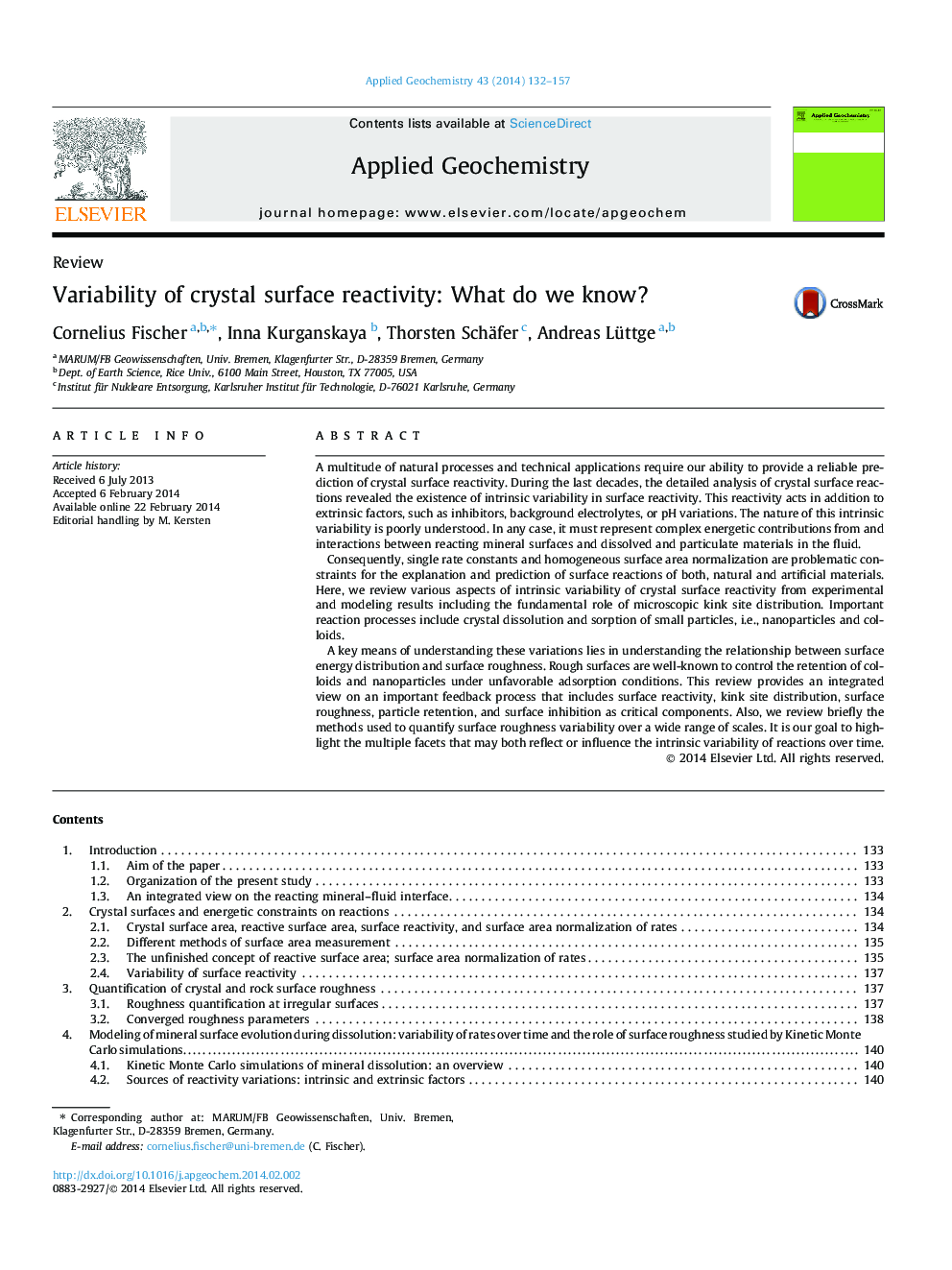| Article ID | Journal | Published Year | Pages | File Type |
|---|---|---|---|---|
| 4435826 | Applied Geochemistry | 2014 | 26 Pages |
•Crystal surface reactivity and roughness.•Reaction rate variability: dissolution and particle adsorption.•Kinetic Monte Carlo simulations of crystal dissolution.•Diagenetic reactions and colloidal inhibitors.
A multitude of natural processes and technical applications require our ability to provide a reliable prediction of crystal surface reactivity. During the last decades, the detailed analysis of crystal surface reactions revealed the existence of intrinsic variability in surface reactivity. This reactivity acts in addition to extrinsic factors, such as inhibitors, background electrolytes, or pH variations. The nature of this intrinsic variability is poorly understood. In any case, it must represent complex energetic contributions from and interactions between reacting mineral surfaces and dissolved and particulate materials in the fluid.Consequently, single rate constants and homogeneous surface area normalization are problematic constraints for the explanation and prediction of surface reactions of both, natural and artificial materials. Here, we review various aspects of intrinsic variability of crystal surface reactivity from experimental and modeling results including the fundamental role of microscopic kink site distribution. Important reaction processes include crystal dissolution and sorption of small particles, i.e., nanoparticles and colloids.A key means of understanding these variations lies in understanding the relationship between surface energy distribution and surface roughness. Rough surfaces are well-known to control the retention of colloids and nanoparticles under unfavorable adsorption conditions. This review provides an integrated view on an important feedback process that includes surface reactivity, kink site distribution, surface roughness, particle retention, and surface inhibition as critical components. Also, we review briefly the methods used to quantify surface roughness variability over a wide range of scales. It is our goal to highlight the multiple facets that may both reflect or influence the intrinsic variability of reactions over time.
